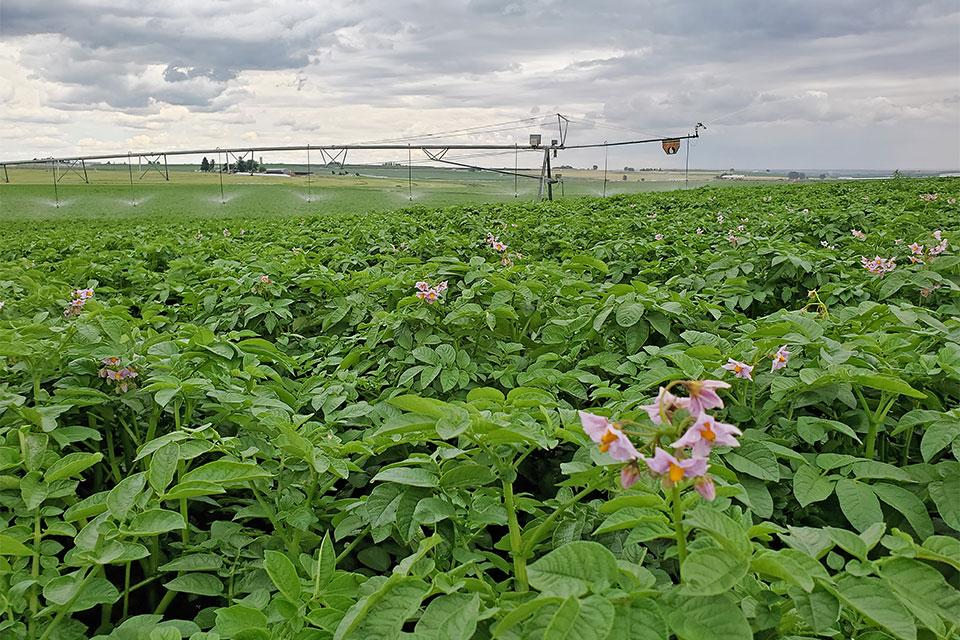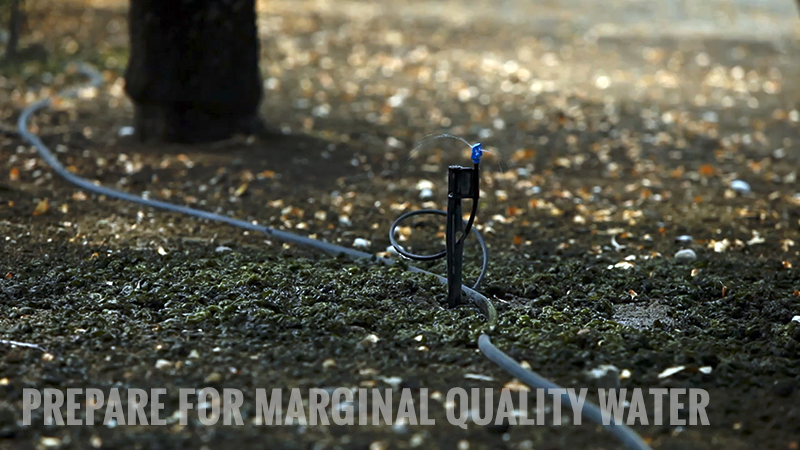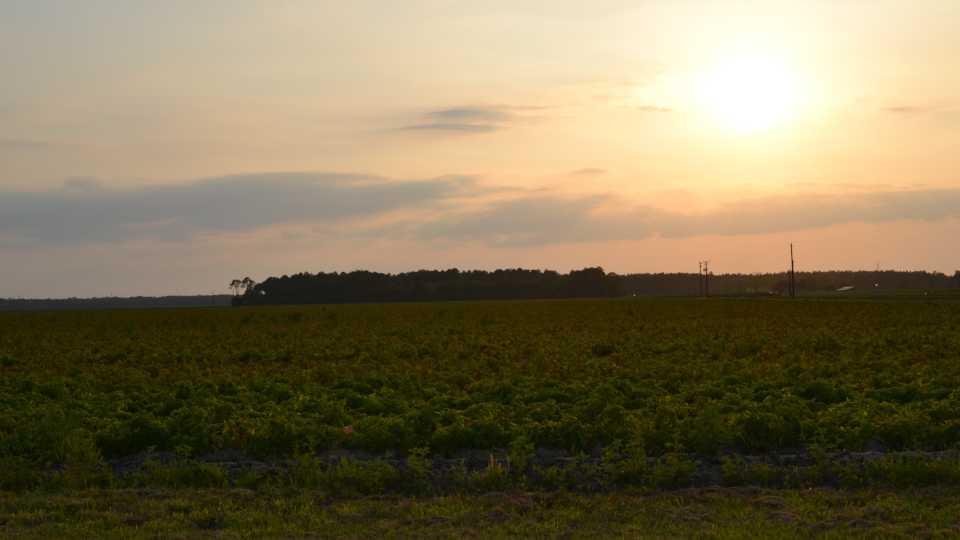Know Water Needs for the Different Potato Growth Stages

Growing potatoes from start to finish requires keeping an eye on water needs throughout. Photo by Carrie H. Wohleb/Washington State University
Water is vital for potatoes, with green tissues and tubers containing 90% to 95% and 75% to 85% water respectively. An actively transpiring potato plant may replenish its entire water content up to four times a day under optimal growing conditions.
The water needs of potato plants change depending on their size and growth stage. They are sensitive to water stress, and both excess and deficient soil moisture can cause problems.
Planting to Emergence
Potato seed pieces should be planted in soil with at least 75% available moisture. This encourages uniform root and sprout growth, and it promotes wound healing of seed pieces, so they are less susceptible to infection by bacterial and fungal pathogens. In sandy soils or in arid regions, irrigation before planting can bring soil moisture up to the needed level. However, irrigation should be avoided post-planting and before crop emergence because excess moisture around the seed piece promotes decay.
In unirrigated fields, growers should monitor soil temperature and moisture status closely and plant when conditions are most favorable. Precutting and wound healing seed pieces before planting may be worthwhile when the soil environment cannot be controlled.
Vegetative Growth
Water needs for potatoes change a lot during the vegetative growth stage. When the plants are small and there is little groundcover, water evaporating from the soil surface is more significant than water removed by the plants. This changes as the canopy grows. Canopy growth at this stage is rapid, and water use increases accordingly.
Moisture should be sustained above 75% to 85% of available soil water to promote ongoing root growth. Roots are essential for providing water and nutrients that fuel the canopy’s rapid development. Limiting canopy growth at this time will reduce the crop’s yield potential, because leaves are essential for photosynthesis, which produces the dry matter that will eventually be stored in the tubers.
Excess moisture can also have negative consequences at this growth stage. It can increase soil compaction and clod formation during mechanical cultivation, and it can leach nitrogen from the root zone.
Tuber Initiation
Tuber Initiation is a short growth stage that normally lasts only 10 to 14 days. The stolon tips begin to swell when excess carbohydrates, that are no longer needed to support rapid canopy growth, are sent downward for storage. This stage often corresponds with full bloom when determinant cultivars stop producing leaves (e.g., Russet Norkotah and Yukon Gold), and when indeterminant cultivars significantly slow leaf growth to begin focusing on tuber development (e.g., Russet Burbank).
Maintaining a moist environment — close to 80% to 90% available soil moisture — is optimum for tuber set. The moist environment also helps to reduce common scab infections. Care should be taken; however, if soil temperatures drop to below 60°F and stay that way for several days because cold and wet soil conditions together can induce brown center and hollow heart tuber disorders in some cultivars.
Tuber Bulking
Tuber Bulking is when tuber cells expand and accumulate water, nutrients, and carbohydrates. The highest demand for water occurs during the tuber bulking stage; the plants may use 2 to 3 inches of water per week, and sometimes more when temperatures are high and potato plants are transpiring a lot of water to keep cool.
Available soil moisture maintained at 80% to 90% is ideal for tuber bulking, though this can be reduced to 75% to 85% toward the end of the stage. Water shortages during tuber bulking can lead to disorders like growth cracks and malformed tubers, especially when combined with high temperatures. Water deficits can also initiate premature leaf senescence, which can hasten maturity and reduce yields. This has further consequences, since a senescing plant canopy is more susceptible to pathogens that take advantage of stressed plants, like the fungi that cause late blight and early dying diseases.
Excess moisture during tuber bulking causes lenticels (pores on the tuber surface) to swell, and these enlarged lenticels can be an entry point for the pathogens that cause bacterial soft rot and pink rot. Wet soil conditions and extended periods of leaf wetness can also favor the pathogens that cause late blight and white mold.
Maturation
Maturation is marked by the decline and death of the leaves, a slowing of tuber growth, and development of the tuber skin. Water requirements decrease dramatically during maturation. Available soil moisture can be reduced to 70% to 75%, which will promote tuber skin set and discourage diseases like soft rot, pink rot, and Pythium leak.
Tuber hydration levels in the days leading up to harvest can have a significant impact on bruise. Dry soils can dehydrate tubers, which makes them more susceptible to blackspot bruise. But excessive soil moisture can increase shatter bruise.









